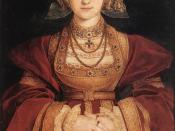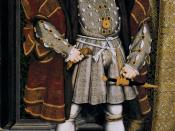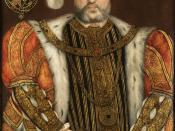The year was 1556. Mary Tudor had assumed the throne of England three years before. A fervent Catholic, Mary sought to undo the changes of the previous monarchs, who had begun a Protestant Reformation within England. The former Archbishop of Canterbury under the late Edward VI, Thomas Cranmer, had been one of the many proponents of the Protestant Reformation in England. He had been imprisoned since Mary had assumed the throne. For three years, theologians had debated him, urging him to reject Protestantism. At the age of 67, Cranmer was tired. He longed for a peaceful life and wanted to avoid his punishment, which was to be death by fire. Thus, he signed a paper recanting his Protestant beliefs.
Traditionally, someone who recanted would have their execution stayed and would be released. However, this would not be so with Thomas Cranmer. On the 21 of March, 1556, he attended the sermon that was customarily preached to a heretic before execution.
"My hand has offended in writing contrary to my heart. Therefore, my hand shall be first punished, for if I may come to the fire it shall be first burned," Cranmer said (Haack). Without waiting any longer, Cranmer ran outside of the church and thrust his right hand into the flames. The rest of his body followed afterwards. "Lord Jesus, receive my spirit," were his last words.
The Anglican Church in England is very well-known today. From coronations in Westminster Abbey by the Archbishop of Canterbury to the baptism of infants in the town of St. Ives by a nearby vicar, the Church of England affects the daily lives of its attendees in large ways. It was not always this way. There was a time when the Church of England was not the Church of England, but a church...



I wish I wrote this well in 9th grade.
The topic is interesting and the substance is good, but I would argue that the composition detracts from the overall fulfillment possible by this essay. The sentences are short and to the point, which I applaud, but could be more creatively formed. I would suggest the book "Writers Options," which is an excellent source for sprucing up papers with sentence combining. A great example of how this could be used is in the last paragraph, in which the phrase "dispute" is used in the first sentence, then repeated in the second--the two could be easily combined into a more interesting sentence.
Other than that, the context of the essay shifts a bit, forcing the reader to leap with the writer. Further marks could be placed in the transitory aspects.
1 out of 1 people found this comment useful.